
Today we made a visit to a Neolithic ‘axe factory’. I say we, Karen and Roxanna stayed in the car whilst I went for a wander. The term ‘axe factory’ is embedded in an economic view of the past and the subject of one of my favourite lectures at Chester: Stone Age Economics.
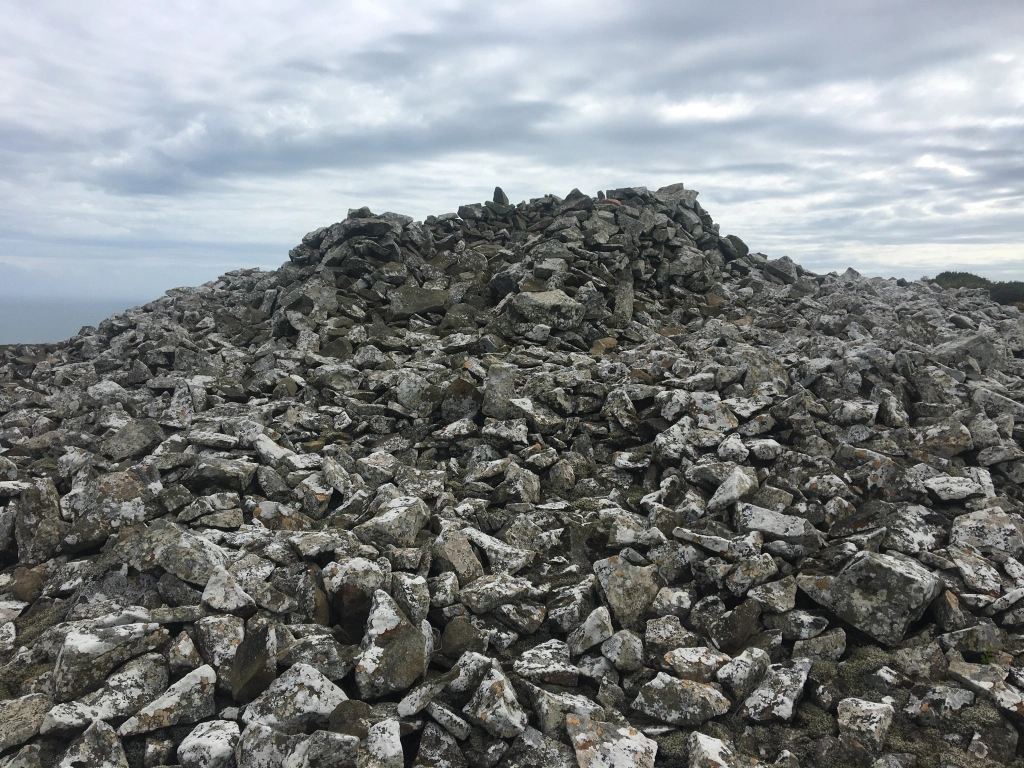
Anyway, once out of the car I followed the obvious path up to a distinct pile of rocks on a small summit. It was some kind of collapsed structure, but the stone it was made from clearly wasn’t knappable. However, the summit gave me a good view of the area I had crossed, and I knew from previously looking at a 1:25 scale map approximately where the ‘factory’ was located. It was lower down, within spitting distance of the car park.
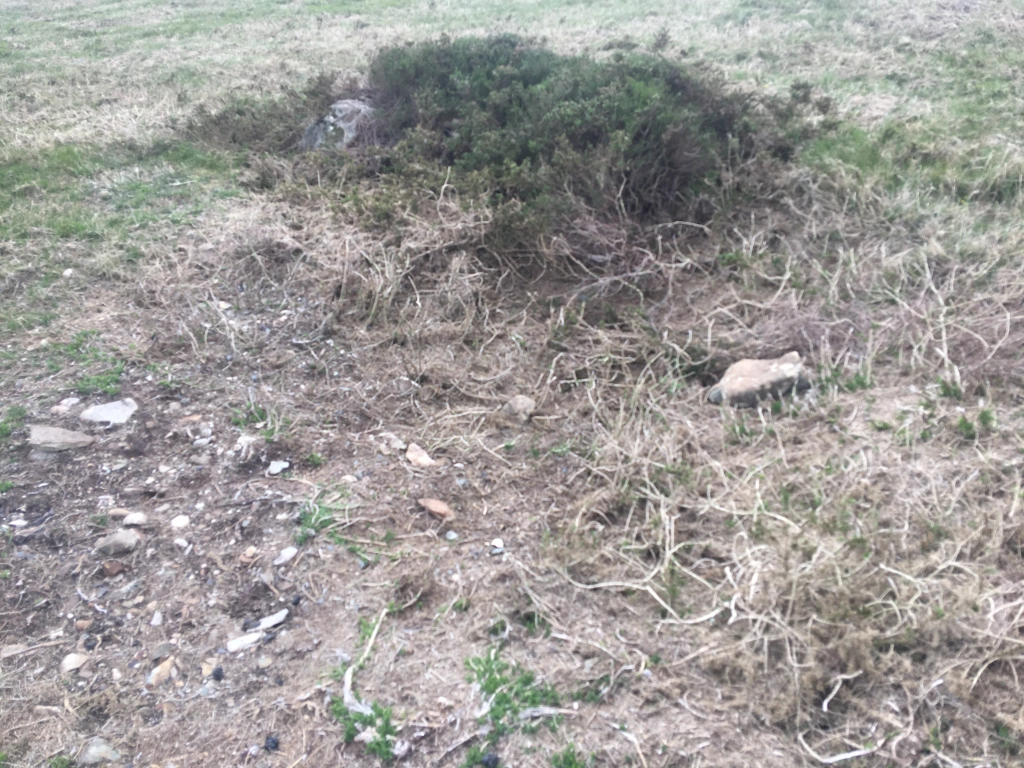
The ‘factory’ was found in the 1950s after a fire, and comprised a series of pits with surrounding lithic scatters. A knappable volcanic material outcropped in certain places, and the pits were the result of Neolithic people digging down to get at the seams below the surface.
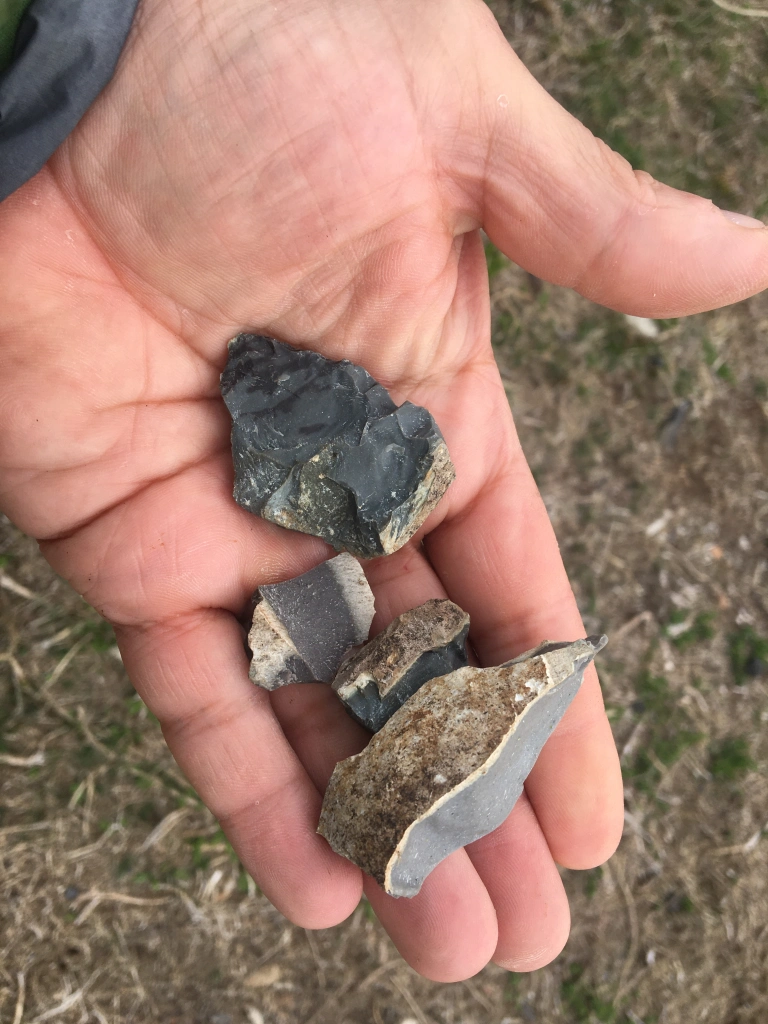
Whilst getting pretty close to the car park I saw a sunken feature filled with foliage and surrounded by some interesting looking fragments. The material looked knappable and it appeared to be debitage, what is known as ‘shatter’. Shatter has no obvious evidence of human modification, such as a bulb of percussion, but forms a significant component of any reduction process. These pieces were very well preserved for surface finds. Or they are not very old.
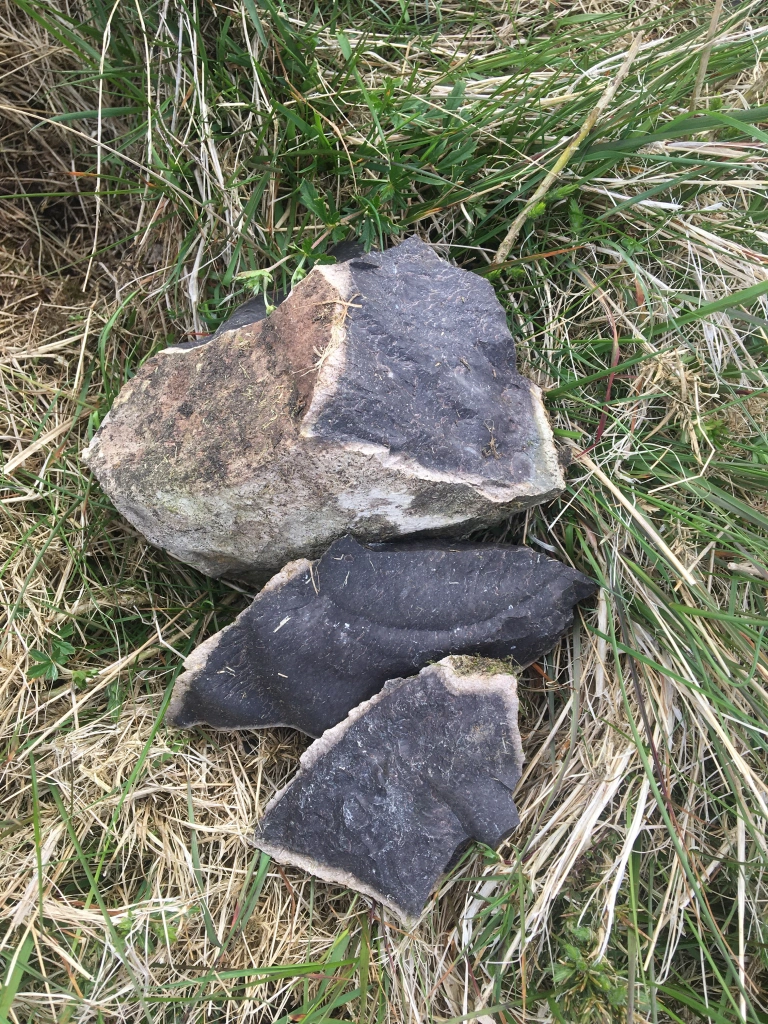
These three large pieces were at a different pit, but show the material more clearly. The thing to note is the outer cortex and it’s thickness on these flakes. Anyway, the star of the show, and the one I brought away with me is this large piece below.
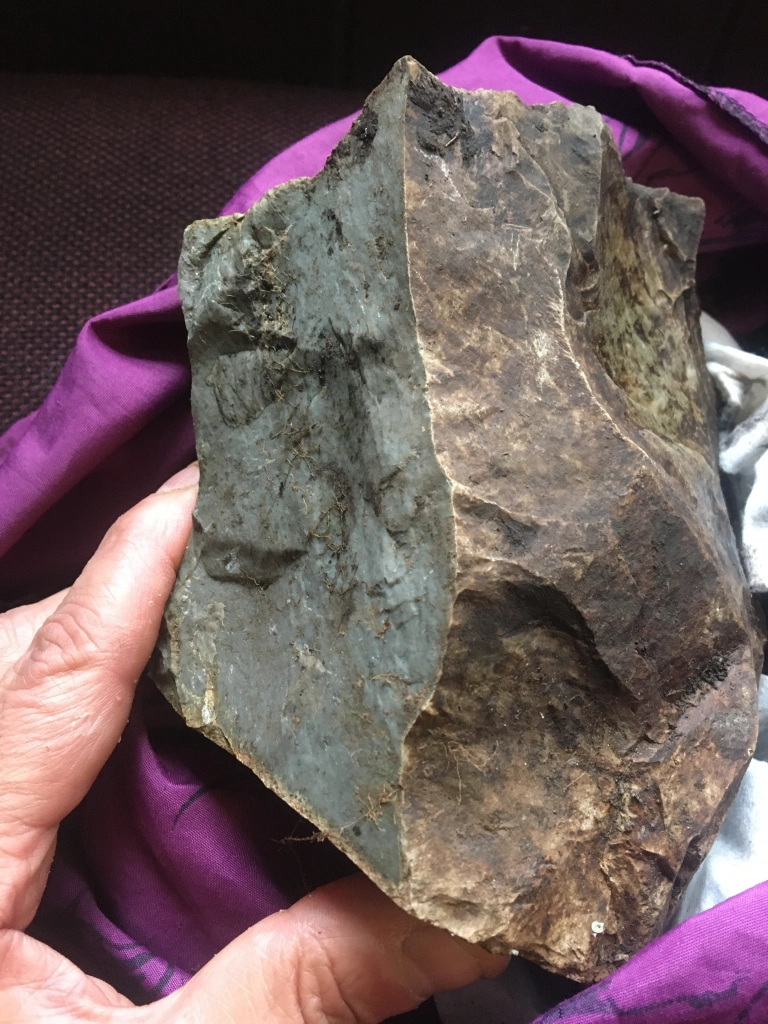
The above image shows the inner gray fine grained volcanic material on the left, in contrast to its outer cortex on the right. So far, so good. The following image shows part of the outer face, and on it what I think is a flake scar from a hard hammer removal.
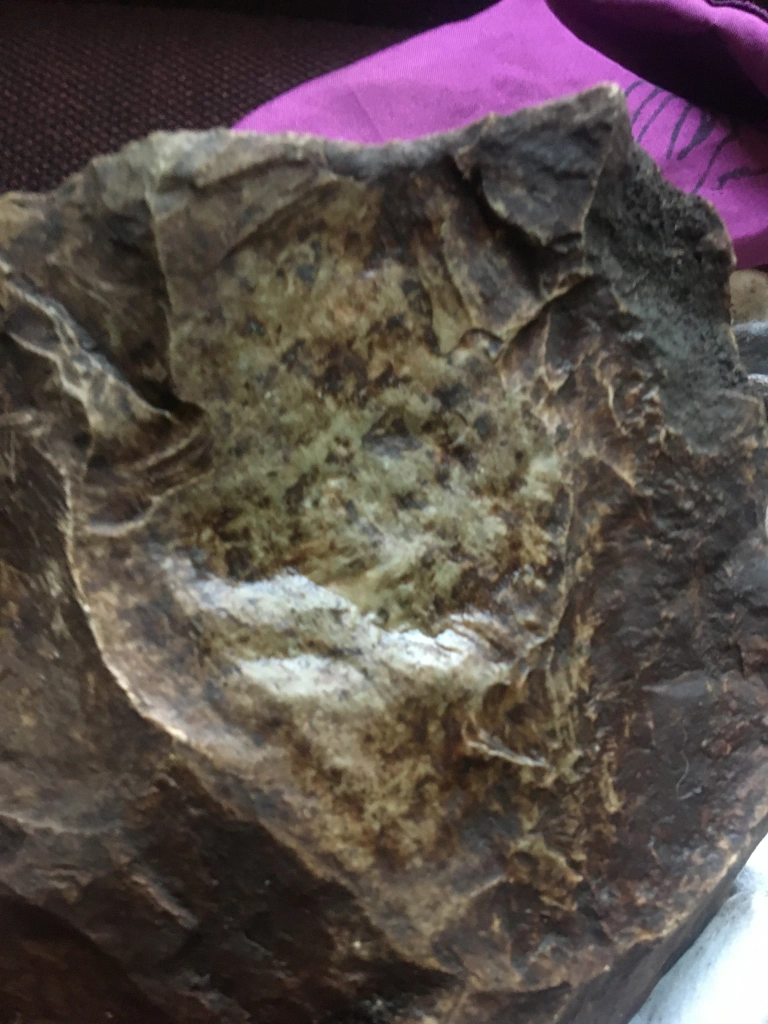
This suggests that the outer surface is not homogeneous, but the thickest cortical part formed in Geological time. Presumably this piece was then quarried during the Neolithic and the aforementioned flake removed, perhaps to test the quality. The piece was apparently then abandoned. If this did occur during the Early Neolithic it would have been perhaps 5000 years ago. Long enough for a patina, or new surface to develop over the flake scar.
So I am arguing three phases: an original geological cortex; then a flake removed in the Neolithic and over 5000 years a patina formed over that flake scar; finally, a historical period removal revealing the grey inner surface.
Because I believe this is a humanly modified piece I need to register it with the local Finds Liaison Officer and let them decide. Tomorrow I need to find a museum!
Update. I didn’t find a local museum so I will contact the National Museum of Wales to see what they think…
Leave a Reply